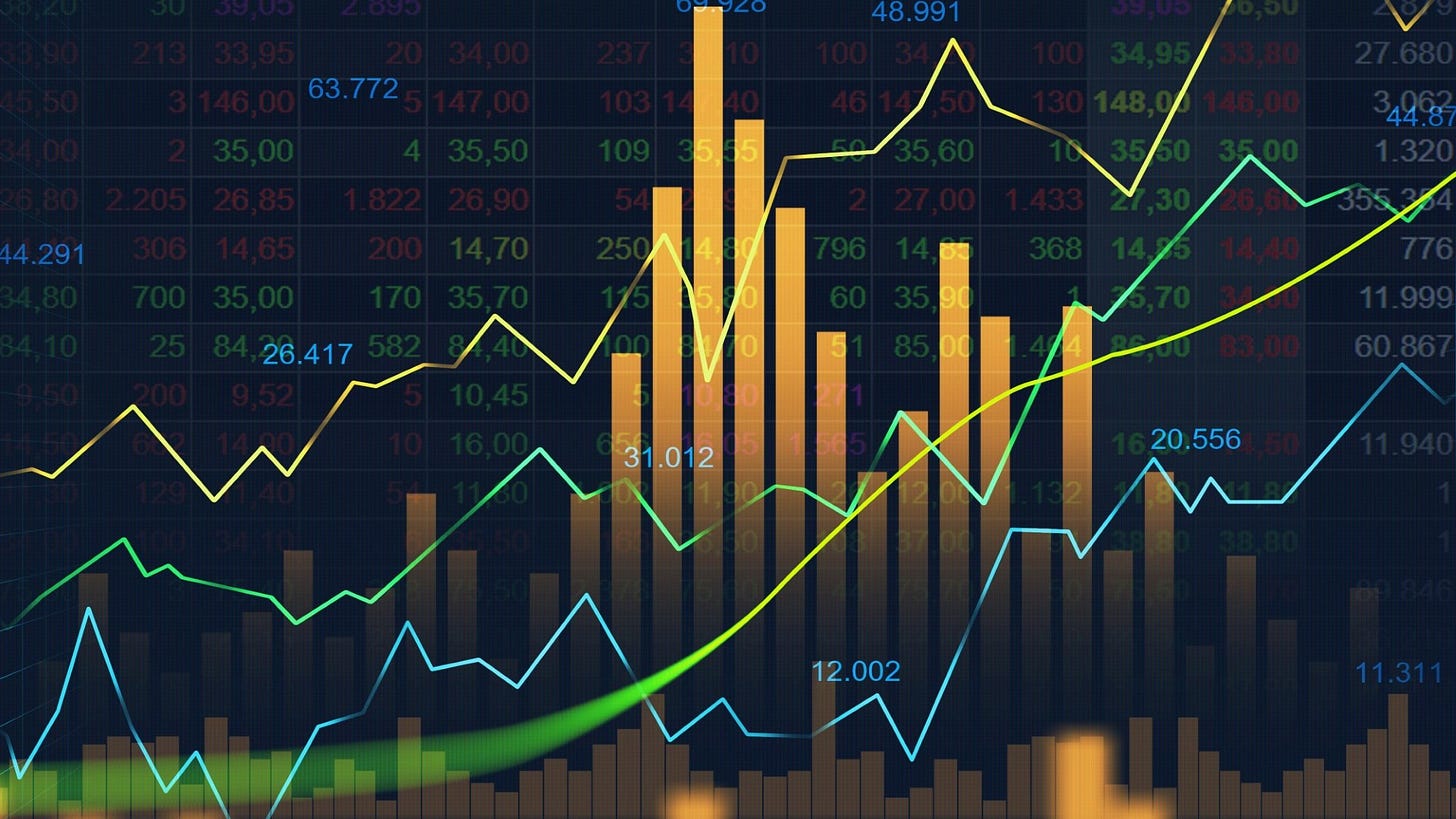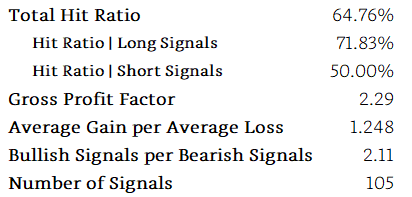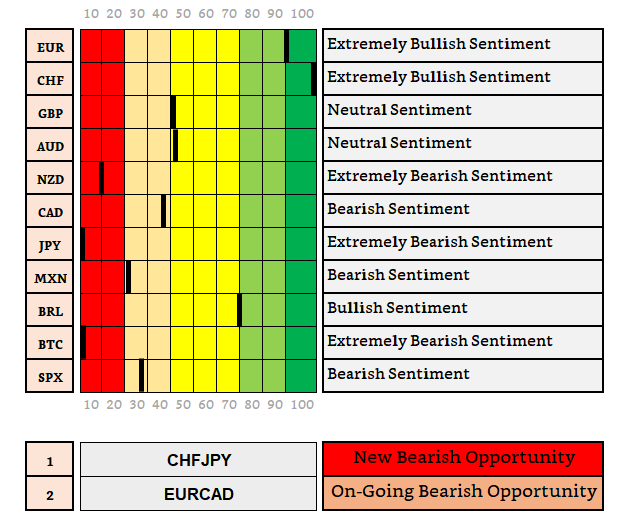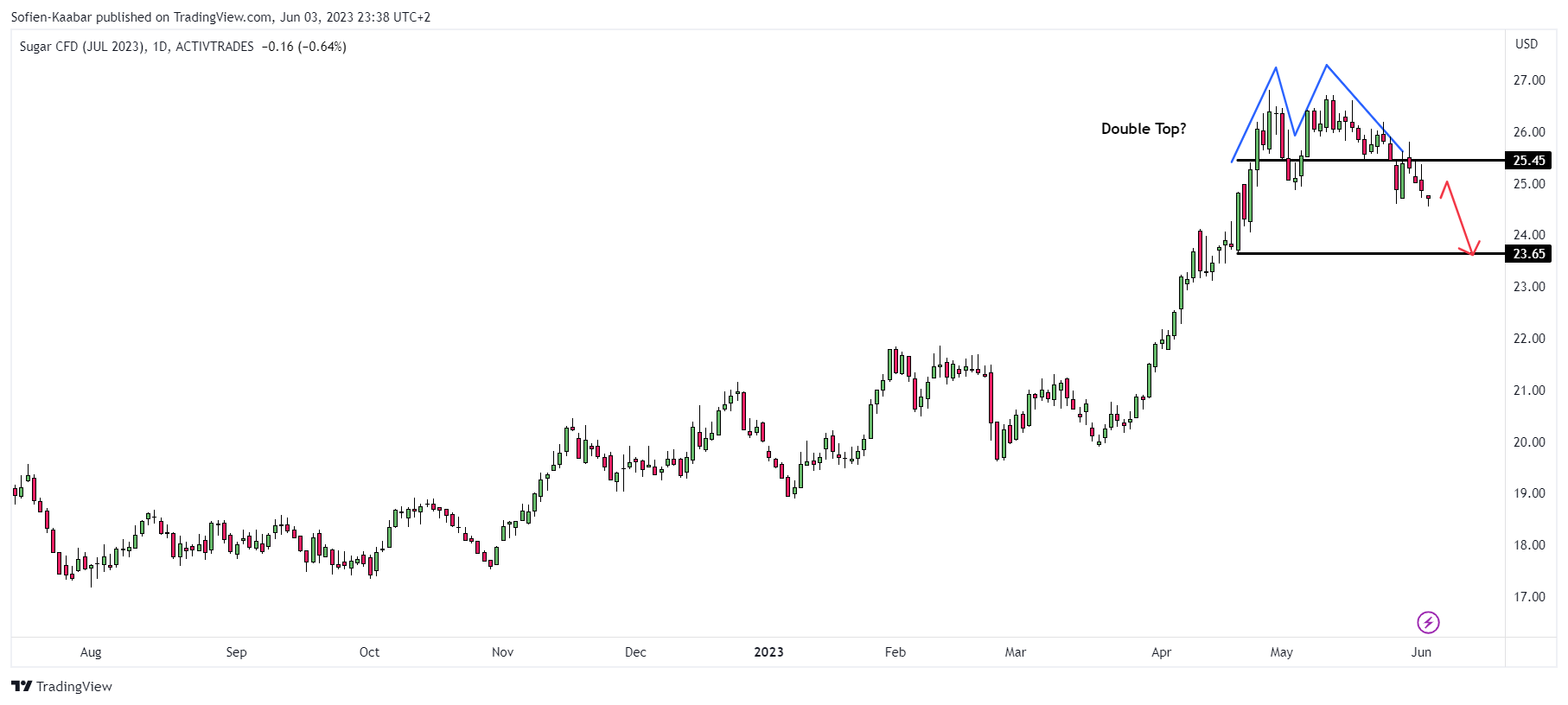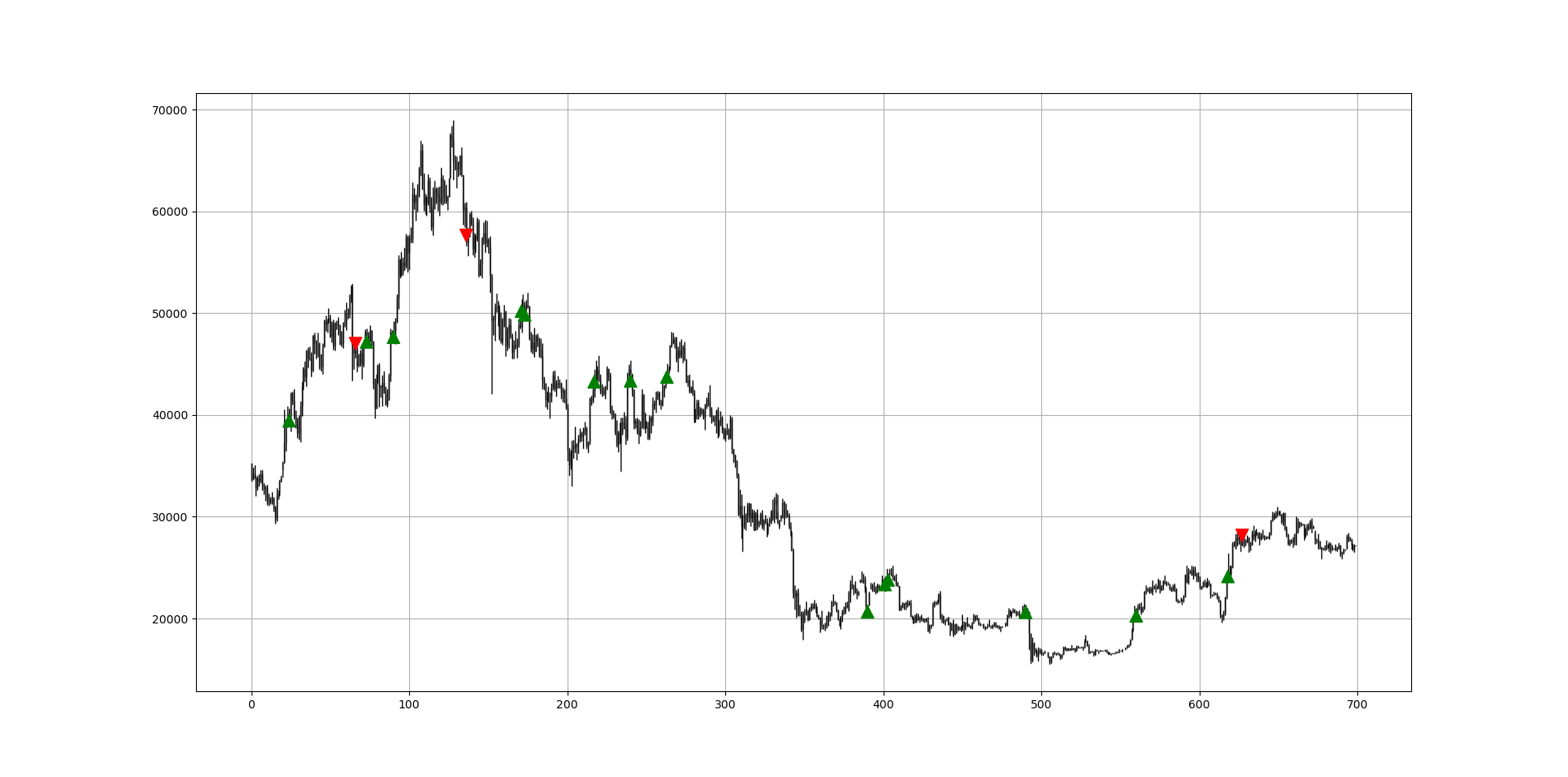The Weekly Market Sentiment Report: 4th June - 11th June 2023
The Weekly Market Sentiment Report: 04/06/2023 - 11/06/2023
CONTENTS
EVOLUTION OF THE REPORT
ECONOMIC CALENDAR
THE PUT-CALL RATIO SENTIMENT STRATEGY
THE GAMMA EXPOSURE INDEX (THE WHITE INDEX)
THE AMERICAN ASSOCIATION OF INDIVIDUAL INVESTORS
THE COMMITMENT OF TRADERS REPORT: NORMALIZED VALUES
BITCOIN’S FEAR AND GREED STRATEGY
GERMANY ZEW ECONOMIC SENTIMENT INDEX
THE ISM PMI: THE CEO’S SENTIMENT
THE UNIVERSITY OF MICHIGAN CONSUMER SENTIMENT INDEX
DISCLAIMER
EVOLUTION OF THE REPORT
This report will grow in time due to feedback and new techniques put into place. You may notice new markets added or other markets removed. Similarly, new techniques and strategies may be added or having their presentation changed so that everyone benefits from this report. Make sure you contact me for your feedback (i.e. nature of the document, its usefulness, its time interval, its content, language, etc.).
At the moment, the future changes over the coming months can be summed up as follows:
Adding the Bullish Percentage Index, a collection of individual technical indicators calculated on each stock of the S&P 500. Following this, a global index is constructed in order to calculate the current sentiment.
Adding the COT Pattern Recognition System: This is a pattern recognition algorithm on the values of the COT.
ECONOMIC CALENDAR
THE PUT-CALL RATIO SENTIMENT STRATEGY
The equity put-call ratio published by the CBOE gives insights to the current market stress. Historically, the correlation with the stock market (S&P 500) has been intuitively negative with around -0.40 correlation using the Spearman rank correlation coefficient (with -0.32 correlation given using the Pearson correlation coefficient). Similarly, the maximal information coeffcient (MIC) which measures the degree of non-linear relationship has given 0.20 which suggests there is a relationship between the two time series (whether negative or positive).
The strategy uses a type of mean-reversion technique on the put-call ratio to derive signals. The performance of the sentiment model is found below.
Conclusion: A bearish signal has appeared on the PCR strategy a few weeks ago. The conviction is not at its highest due to a conflicting signal from the next model.
Historical Performance
THE GAMMA EXPOSURE INDEX (THE WHITE INDEX)
The Gamma Exposure Index (GEI), a proprietary indicator created by financial analytics firm Squeeze Metrics. A stock's or other financial asset's exposure to fluctuations in the general market or benchmark index, usually the S&P 500, is measured by its GEI. The GEI, to put it simply, assesses how sensitive a stock's returns are to fluctuations in the market. A stock's returns are thought to be more closely correlated with market movements if the GEI is higher, whereas the opposite is true if the GEI is lower. Squeeze Metrics employs GEI to shed light on a stock's or portfolio's risk profile and point out potential avenues for diversification or risk management. Historically, the GEI is correlated with the S&P 500 (around 0.30 across all three different correlation metrics).
The performance of the sentiment model is found below.
Conclusion: A bullish signal has appeared on the GEI strategy. The conviction is not at its highest due to a conflicting signal from the PCR model.
Historical Track Record
THE AMERICAN ASSOCIATION OF INDIVIDUAL INVESTORS
The AAII is an equity-based sentiment indicator published by the American Association of Individual Investors every week. The sentiment strategy combines it with the RSI and a 200-Day moving average. The performance of the sentiment model is found below.
Conclusion: The sentiment scanner is looking for the next signal since giving a bullish signal a few weeks ago. Keep in mind that this is a weekly indicator.
Historical Track Record
THE COMMITMENT OF TRADERS REPORT: NORMALIZED VALUES
The U.S Commodity Futures Trading Commission (CFTC) publishes statistics of the futures market on a weekly basis called the Commitment of Traders (COT) report. The report has many valuable information inside, namely the number of futures contracts held by market participants (hedge funds, banks, producers of commodities, speculators, etc.). Two main categories have to be distinguished:
Commercial players: They deal in the futures markets for hedging purposes (i.e. to cover their operations or other trading positions). Examples of hedgers include investment banks and agricultural giants. Their positions are negatively correlated with the underlying market.
Non-commercial players: They deal in the futures markets for speculative reasons (i.e. to profit from their positions). Examples of speculators include hedge funds. Their positions are positively correlated with the underlying market.
The COT meter takes the difference between the net non-commercial players and the net commercial players in order to get a final net value which is supposed to be positively correlated to the underlying asset.
For example, if the Canadian Dollar is showing an extreme value of 100, then this means that taking into account the past 26 weeks (6 months), the net market positioning has been overly bullish which could mean that a correction may be likely. The following table summarizes the current state of the markets with the optimal opportunities:
The COT report is also known for its commodities side, and therefore, the following shows a summary of a few key commodities:
The details of the trade opportunities are as follows. Make sure to remember that theses are no advices whatsoever, they are merely charts on COT signals.
EURCAD has an on-going bearish view seen below on the chart.
CHFJPY is showing interesting technical signals to confirm the COT opinion.
SUGAR is showing mildly interesting technical signals.
PLATINUM not showing interesting bearish signals (hence, no chart).
BITCOIN’S FEAR AND GREED STRATEGY
The Bitcoin Fear & Greed is a daily sentiment-based indicator which uses insights from volatility, direct surveys, open interest, and patterns to calculate a normalized value that shows where the inflection points are likely to be. The strategy uses a barrier technique to predict where the market will likely shape a short-term inflection point. The performance of the sentiment model is found below.
Conclusion: The scanner is neutral at the moment.
Historical Track Record
GERMANY ZEW ECONOMIC SENTIMENT INDEX
The Germany ZEW Economic Sentiment Index is a widely recognized economic indicator that measures the sentiment or expectations of financial experts and analysts regarding the German economy. ZEW stands for "Zentrum für Europäische Wirtschaftsforschung" or the Center for European Economic Research, which is a prominent economic research institute based in Germany.
The ZEW Economic Sentiment Index is calculated by surveying a panel of around 300 financial experts, including analysts and institutional investors, who are asked to provide their outlook on the German economy for the next six months. These experts are asked to evaluate factors such as economic growth prospects, inflation expectations, employment conditions, and other relevant economic indicators.
The index is constructed by taking the percentage of positive responses and subtracting the percentage of negative responses. A positive index value indicates optimism and suggests that economic conditions are expected to improve in the near future, while a negative value indicates pessimism and suggests expectations of worsening economic conditions.
The Germany ZEW Economic Sentiment Index is closely monitored by investors, policymakers, and economists as it provides valuable insights into the sentiment and expectations of market participants. It can have an impact on financial markets, as changes in sentiment can influence investment decisions and market movements.
It's important to note that the ZEW Economic Sentiment Index reflects the opinions of experts and analysts, and it is not a direct measurement of actual economic data or outcomes. Nevertheless, it serves as a valuable leading indicator of economic sentiment in Germany.
The model forecasts the next direction of the index which can be used to trade the direction of EURUSD.
Theoretical expectation: A reaction of 1 month is expected following a signal.
Conclusion: It seems that the model is neutral for the moment. No signal in sight given the current levels. However, it’s worth noting that it’s dipping in the negative territory at the moment.
Bear in mind that the ISM PMI is published on a monthly basis.
THE ISM PMI
The institute for supply management provides a monthly survey called the purchasing manager’s index abbreviated to ISM PMI, which is based on questions asked to 400 representatives of industrial companies about the current and future trend of their different activities. It is composed of 5 components that can also be analyzed individually:
New orders — 30% weight.
Production — 25% weight.
Employment — 20% weight.
Supplier Deliveries — 15% weight.
Inventories — 10% weight.
Typically, we interpret the index as 50 being the neutral state of the economy (neither growing and neither shrinking). A reading above 50 indicates an expansion in manufacturing and a reading below 50 indicates shrinking in manufacturing.
Theoretical expectation: A reaction of 18 months is expected following a signal.
Conclusion: It seems that the model is neutral for the moment after signalling a top in 2021. No signal in sight given the current levels.
Bear in mind that the ISM PMI is published on a monthly basis.
THE UNIVERSITY OF MICHIGAN CONSUMER SENTIMENT INDEX
The University of Michigan Consumer Sentiment Index is a measure of consumer confidence or optimism about the economy, as well as their own financial situation. The index is compiled by the University of Michigan's Survey Research Center and is based on a survey of 500 households conducted each month.
The index is derived from responses to a series of questions regarding consumers' expectations for the economy, inflation, interest rates, employment, and their own financial situation. The responses are scored and weighted, with a higher score indicating greater consumer confidence. The Consumer Sentiment Index is often used to gauge the potential impact of economic policies or events on consumer behavior.
Conclusion: It seems that the sentiment index is showing long-term bullishness according to the historical support area.
DISCLAIMER
Every information contained in the report is solely for the purpose of showing another angle. Since it is NOT investment advice or trade recommendations, you must NOT use the report as the sole reason for your trading and investing activities.
Trading is fun, enriching, and interesting but not when it comes at the expense of your hard-earned funds. Do not risk what you cannot afford to lose. You must only trade with money you have already considered gone and you must not use trading as your sole revenue generator. Risk management is even more important than the trading strategy itself, make sure to master it.
Data can have many representations and the information presented is but one side of the story which may be incomplete. All back-testing and forward testing results reflect their own time period and not the future as is the case in every research piece.




